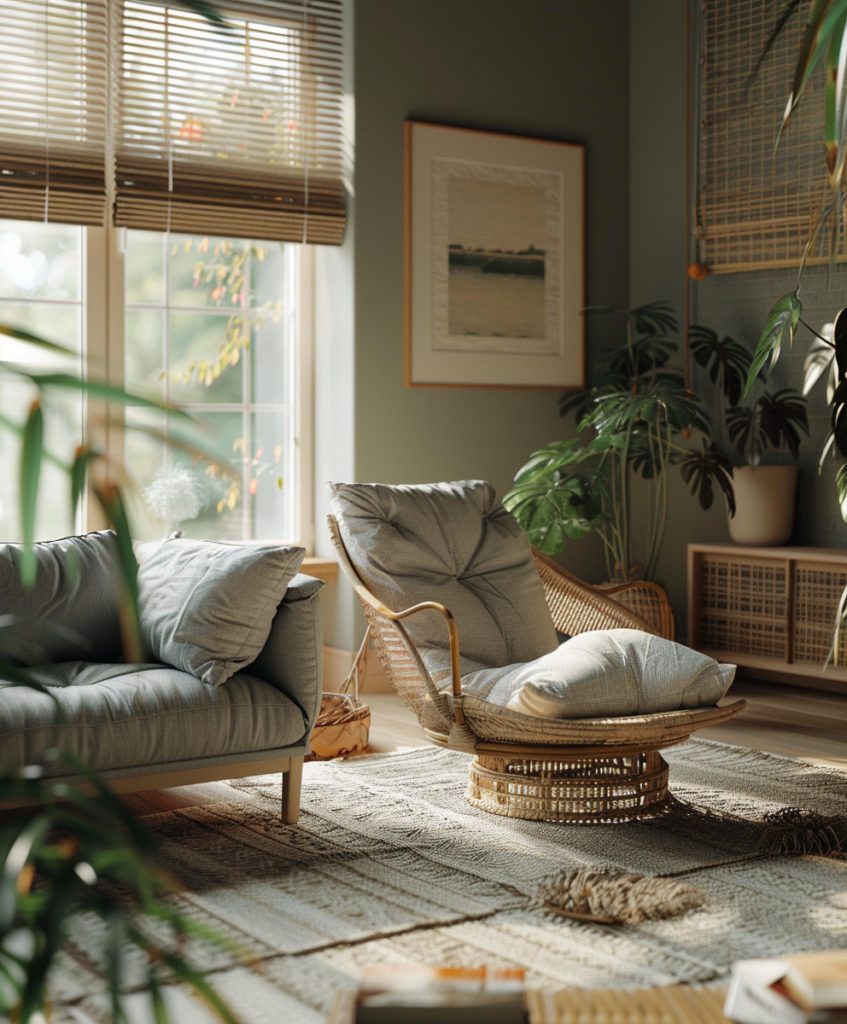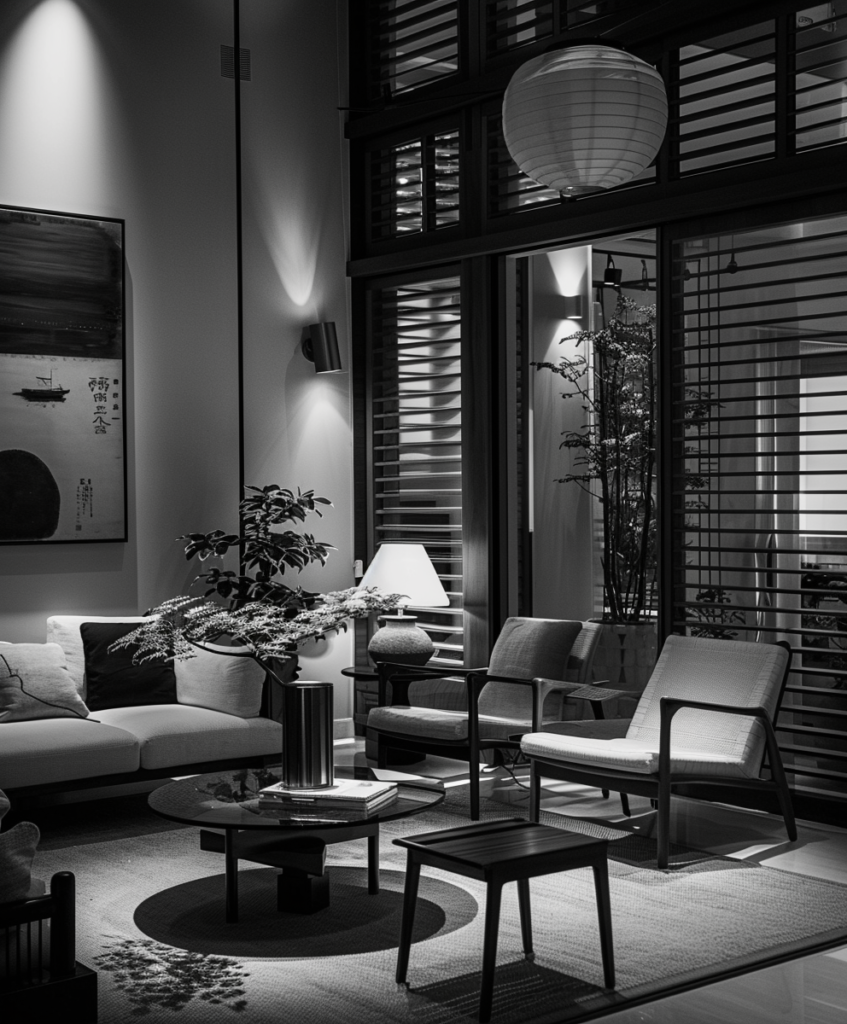Decorating your living room in an Asian style is a wonderful way to create a serene and harmonious atmosphere. Asian design is renowned for its rich cultural heritage, blending elegance, simplicity, and a profound connection to nature. Let’s explore the world of Asian-inspired interior design with ideas to transform your home into an exotic sanctuary.
Introduction to Asian Interior Design
Asian interior design is characterized by simplicity, harmony, and a connection to nature. Different regional styles, such as Japanese, Chinese, and Indian, offer unique characteristics and décor elements. However, they all share a common goal: creating a balanced, peaceful space.




Minimalism Meets Elegance
A core principle of Asian design is minimalism. Spaces are often furnished and decorated sparingly to maintain a clean, tranquil environment. Focus on a few carefully selected furniture pieces and decorations that are both functional and aesthetically pleasing.




Natural Materials and Colors
Natural materials such as wood, bamboo, stone, and paper are central to Asian décor. They add warmth and an earthy tone to your living room. The color palette is usually neutral, featuring shades of beige, brown, gray, and green. Use accent colors sparingly to highlight specific elements or areas.




Zen and Feng Shui: Balance and Harmony
Zen and Feng Shui philosophies heavily influence Asian interior design, aiming to create harmonious energy in the room. Arrange furniture to keep the space open and uncluttered, and avoid overdecorating, as it can disrupt the flow of energy.




Japanese Style: Simplicity and Nature
The Japanese aesthetic emphasizes simplicity and a strong connection to nature. Common elements include tatami mats, shoji screens, and low furniture like futons and floor tables. Adding bonsai trees or ikebana arrangements enhances the natural theme.



Chinese Style: Richness and Tradition
In contrast to Japanese minimalism, Chinese design often incorporates ornate furniture and intricate decorations. Lacquered furniture, porcelain vases, and silk cushions are classic features. Traditional colors like red and gold symbolize luck and prosperity, adding vibrancy to the space.




Indian Style: Vibrancy and Craftsmanship
Indian décor is celebrated for its bold colors and intricate patterns. Handcrafted furniture and décor items made from wood, metal, and textiles are typical. Incorporate richly patterned rugs, wall hangings, and cushions for a cozy, exotic look.



Asian Décor Elements: The Details that Make a Difference



1. Cushions and Textiles
Enhance your living room with cushions and throws featuring Asian-inspired patterns and colors. Opt for natural materials like silk, cotton, or linen, and look for traditional motifs or embroidery to add character.
2. Lighting
Lighting plays a crucial role in Asian design. Paper lanterns, rice paper lamps, and hanging lanterns provide soft, warm illumination. Dimmer switches and candles can further enhance the calming atmosphere.
3. Decorative Accessories
Choose carefully curated accessories such as vases, statues, and wall art. Materials like bamboo, jade, and ceramics are popular for Asian-style décor.
4. Plants and Greenery
Plants are integral to Asian interior design. Incorporate bonsai trees, bamboo, or orchids to bring a touch of nature into your living room. These plants also contribute to the freshness and balance of the space.




Adding Color Accents
While the base colors in Asian design are often neutral, accents like red, gold, and green can be used strategically to symbolize prosperity and harmony. Use these colors sparingly to highlight specific objects or areas.
Room Dividers and Screens
Room dividers and paravents are common in Asian interiors, helping to structure open living spaces. They are often crafted from wood, paper, or bamboo and feature artistic designs that add elegance and functionality.




Final Touch: Your Asian-Inspired Living Room
Decorating your living room in an Asian style requires thoughtful planning and attention to detail. By carefully selecting furniture, decorations, and colors, you can create a tranquil and harmonious retreat that inspires relaxation and peace. Explore various Asian styles to find the perfect combination that resonates with your personal taste.
FAQs
How do I start decorating my living room in Asian style?
Start with a neutral color palette and gradually add furniture and décor items made from natural materials. Incorporate Asian-inspired design elements for a cohesive look.
What plants work best in an Asian-style living room?
Bonsai trees, bamboo, and orchids are excellent choices that align with the aesthetic and enhance the natural ambiance.
What are typical colors in Asian interior design?
Neutral tones like beige, gray, and brown are common, with accent colors like red, gold, and green used to add vibrancy.
How can I create a harmonious atmosphere?
Focus on balanced furniture placement, avoid clutter, and select décor items that promote tranquility and a connection to nature.
What materials are typical for Asian furniture?
Wood, bamboo, stone, and paper are commonly used in Asian furniture and decorative items.
Can I mix different Asian styles?
Yes, combining elements from different Asian styles can create a unique and harmonious aesthetic, provided the overall look remains balanced.
- Modern Balcony Decor: Ideas and Inspiration for a Stylish Oasis – 17. December 2024
- Kitchen Wall Decor Ideas: Creatively Transform Your Kitchen – 17. December 2024
- Balcony and Terrace Lighting Ideas: Create the Perfect Atmosphere – 17. December 2024




0 Comments